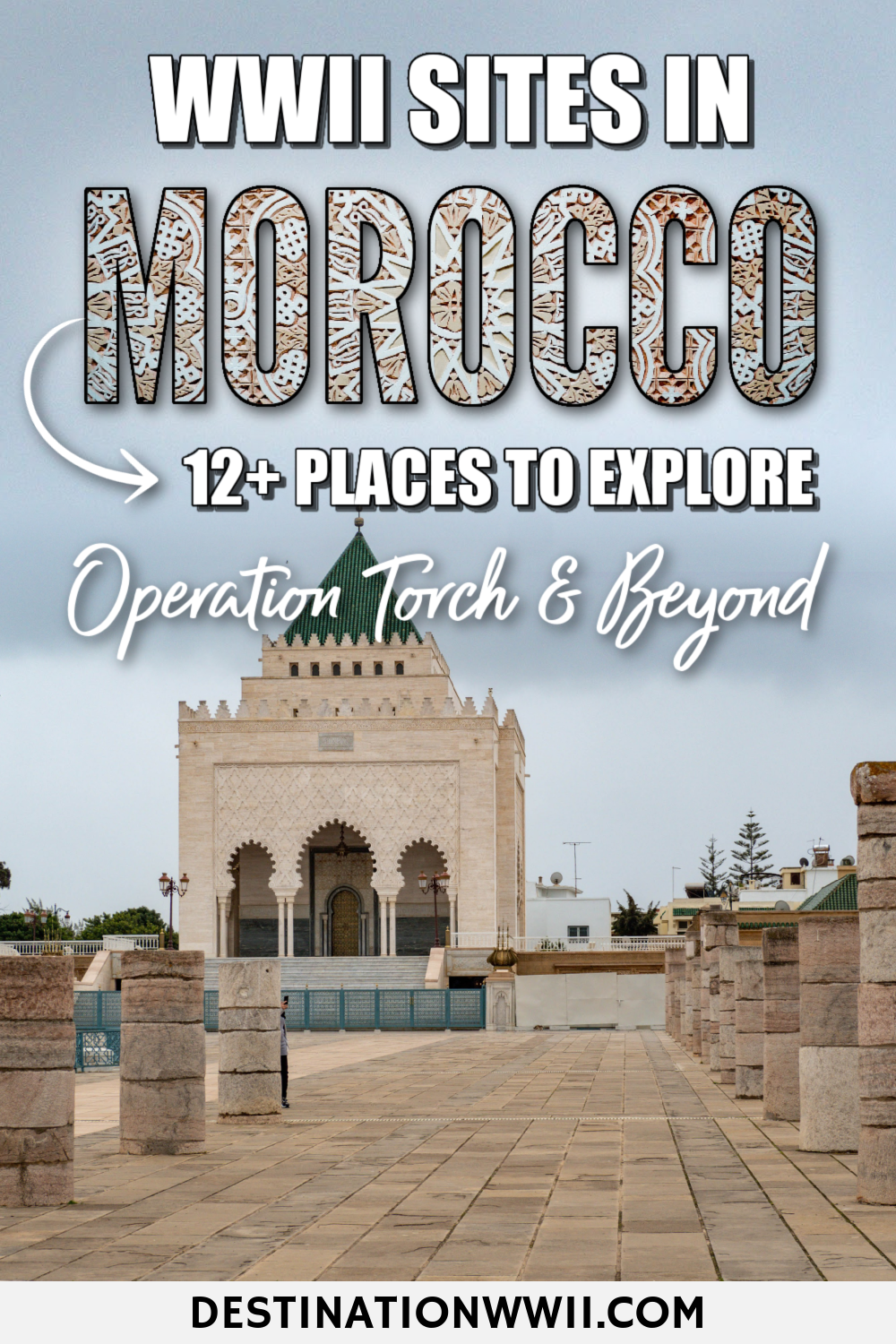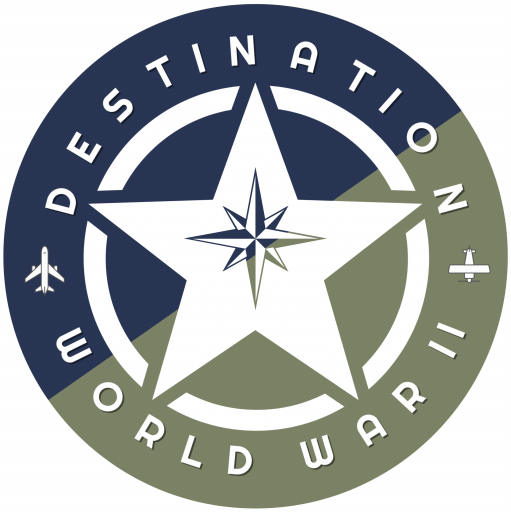As both a world traveler and World War II historian, I was very excited to check out WWII sites in Morocco on my recent trip to this beautiful country. I’ve read plenty on the Mediterranean and North African campaigns of WWII and thus had high hopes for WWII sites in Morocco as a result.
However, that’s not exactly what I found during my few weeks in Morocco in March of 2023. Unlike the memorial-obsessed cities of the United States or the battlegrounds of Europe where much of the war took place, there just aren’t that many WWII sites in Morocco for visitors. (The good thing is that Morocco has more than enough significant and memorable sites to visit to get your history fix.)
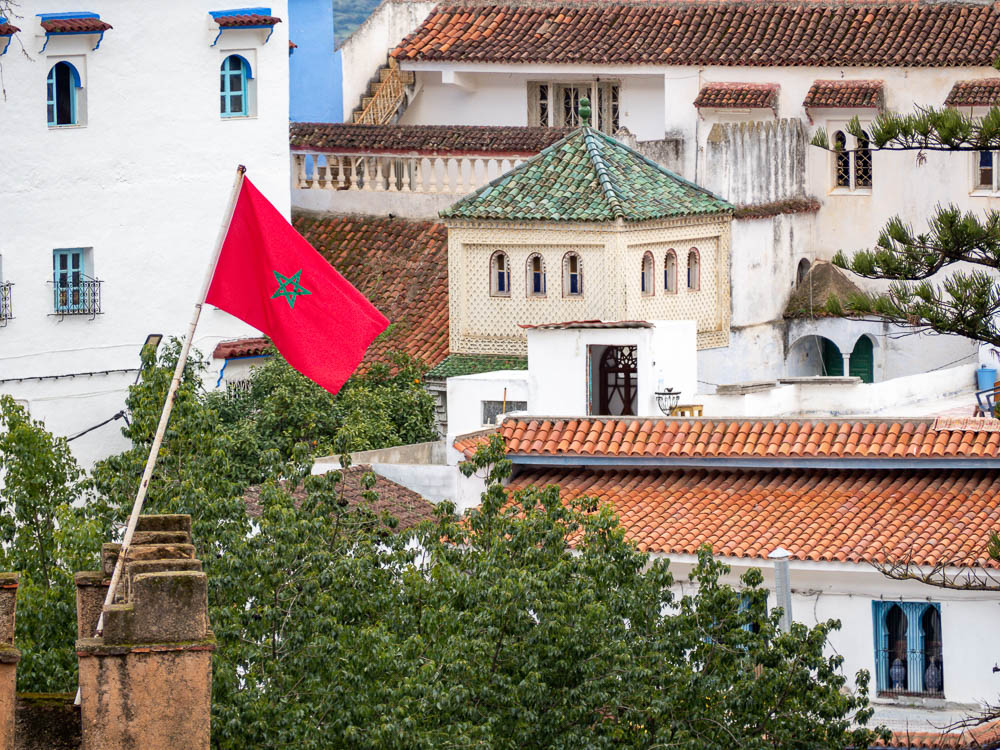
WWII sites in Morocco
Despite the absence of world-class WWII museums and grand memorials, there are still a number of World War II-related sites in Morocco you may find interesting. If you’re looking to spend time in this stunning North African country on the hunt for history, here are the 12+ WWII sites in Morocco you can visit today.

World War II in Morocco
Though most WWII history buffs can tell you all about the European and Pacific campaigns, discussion of the war’s North African campaigns is far less common. Nevertheless, North Africa played an integral role in the war’s outcome.
Battles between the Allies and the Axis powers took place in North Africa from June 1940 until May 1943. Every country on the northern shore of Africa saw fighting—Egypt, Libya, Tunisia, Algeria, and of course Morocco.
Though the North African campaigns together lasted almost three whole years, fighting in Morocco lasted just 8 days. The Allied operation in Morocco is known as Operation Torch.
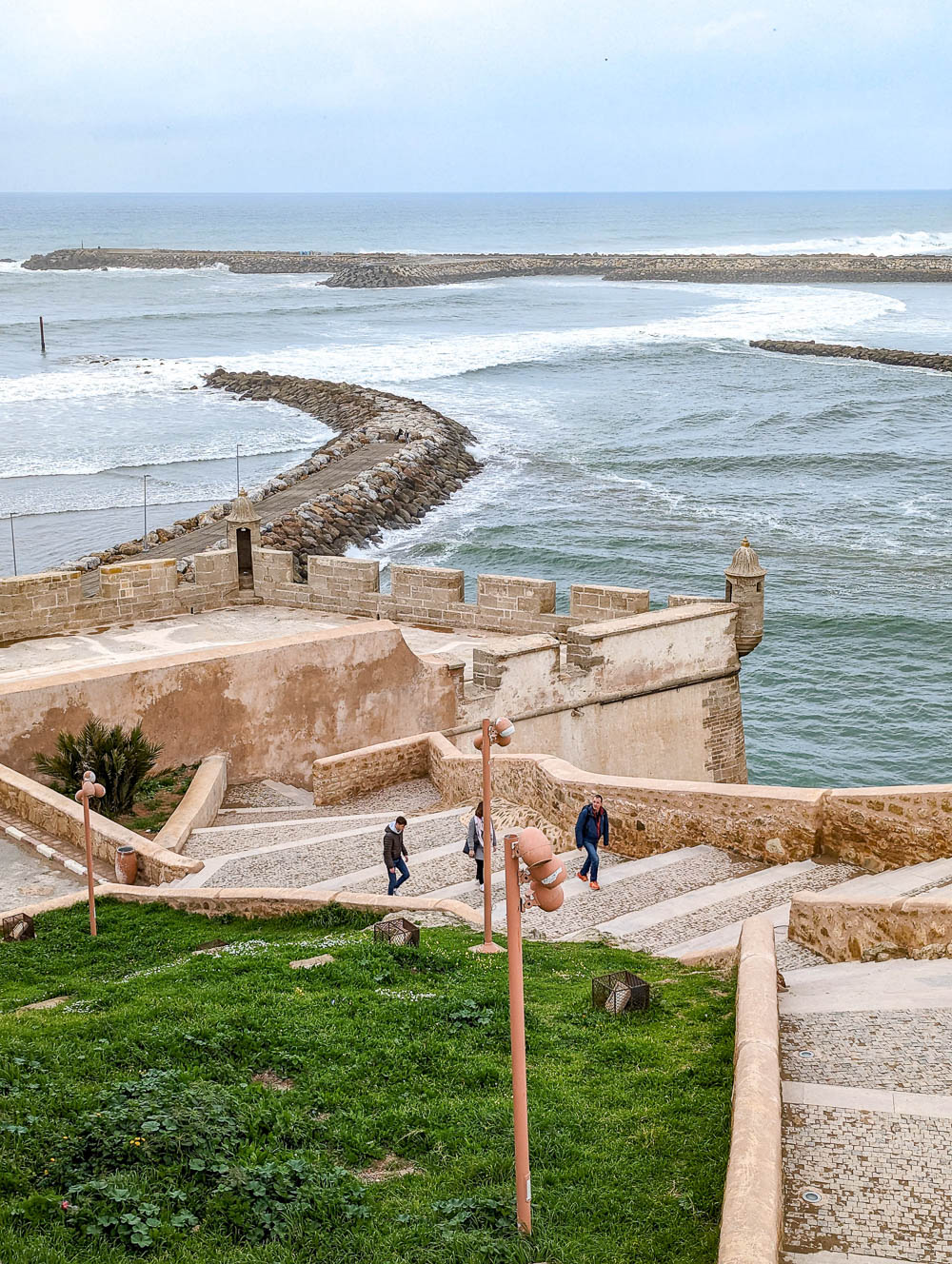
For when you go, here are 15 of the best cities to visit in Morocco for a trip you’ll never forget.
Operation Torch
Operation Torch began with the amphibious landing of American troops at three key Moroccan points on November 8, 1942. It ended just over a week later with France’s surrender. Here is a brief rundown of Operation Torch:
Who participated in Operation Torch?
Fighting for the Allies in Operation Torch were forces from the United States, Great Britain, India, Free France, and the navies of Canada, Australia, and the Netherlands. Generals Dwight D. Eisenhower and George S. Patton were among the operation’s leadership.
Fighting for the Axis powers was Italy, Nazi Germany, and Vichy France.

Operation Torch objective
Operation Torch had three overarching objectives:
- Secure victory and thus end the fighting in Africa
- Allow American troops to engage Nazi Germany, something they had no experience with yet and would need for their next amphibious landing and subsequent battles (Hint, hint… D-Day.)
- Open up a second front in the West to relieve some of the pressure Nazi Germany was putting on the Soviet Union in the East (Stalin had been demanding this for a while.)
More specific objectives included the seizure of Morocco’s and Algeria’s key ports (Casablanca and Oran in Morocco, and Algiers in Algeria) from which they would be able to move east into Tunisia.

Operation Torch outcome
Operation Torch saw a resounding and quick Allied victory. Many of the remaining French troops switched sides, declaring allegiance to Free France and henceforth fought on the side of the Allies. Eventually, the Allies surrounded German and Italian forces in Tunisia and forced their surrender.
From here, Allied forces were able to move on to the Italian campaign which began with the taking of Sicily in Operation Husky, then onto mainland Italy care of Operation Avalanche.
Check out all the other awesome things you can see and do in Morocco with my perfect 2-week Morocco itinerary.

The Casablanca Conference
Besides the actual fighting there during World War II, Morocco is also famous for being the location of the Casablanca Conference.
Held at the Anfa Hotel in Casablanca, Morocco from January 14-24, 1943, the Casablanca Conference was the meeting between British Prime Minister Winston Churchill and U.S. President Franklin D. Roosevelt during which they finalized their military strategies for the remainder of the war and settled on their policy of “Unconditional Surrender.”
Also in attendance were Sultan Mohammed V of Morocco and French Generals Charles de Gaulle and Henri Giraud. Joseph Stalin was invited but unable to attend.
Unfortunately, though this was one of the most consequential events to take place in Morocco at the time, the Anfa Hotel no longer exists and therefore did not make it onto this list of WWII sites in Morocco.
Now that you know a little about what happened in Morocco during WWII, let’s get to what you can see there now. Here are 12+ WWII sites in Morocco to check out on your next visit.

1. Ben M’Sik European Cemetery – Casablanca
The Ben M’Sik European Cemetery is actually a very large civilian cemetery in Casablanca. However, it does house some of the country’s military cemeteries as well. Here you’ll find a Commonwealth cemetery, a French war cemetery, and even a German war cemetery that contains the graves of 224 Germans killed in Morocco.
Visiting information for Ben M’Sik European Cemetery can be found here.
Ben M’Sik Commonwealth Cemetery
The Commonwealth cemetery at Ben M’Sik serves as the final resting place for Commonwealth troops killed in Morocco. It contains 38 graves of those from the United Kingdom, South Africa, Canada, and one Dutch soldier. Among them is Field Marshall Sir Claude Auchinleck who actually died in 1981 but who served as a British Army commander in the North Africa campaign.
You’ll also find the grave of 14-year-old Raymond Steed, a Galley Boy on the SS Empire Morn and the second youngest Commonwealth casualty in all of the Second World War. (The youngest was Reginald Earnshaw, also 14 years old, who died aboard the SS North Devon off the coast of Norfolk in July 1941.)
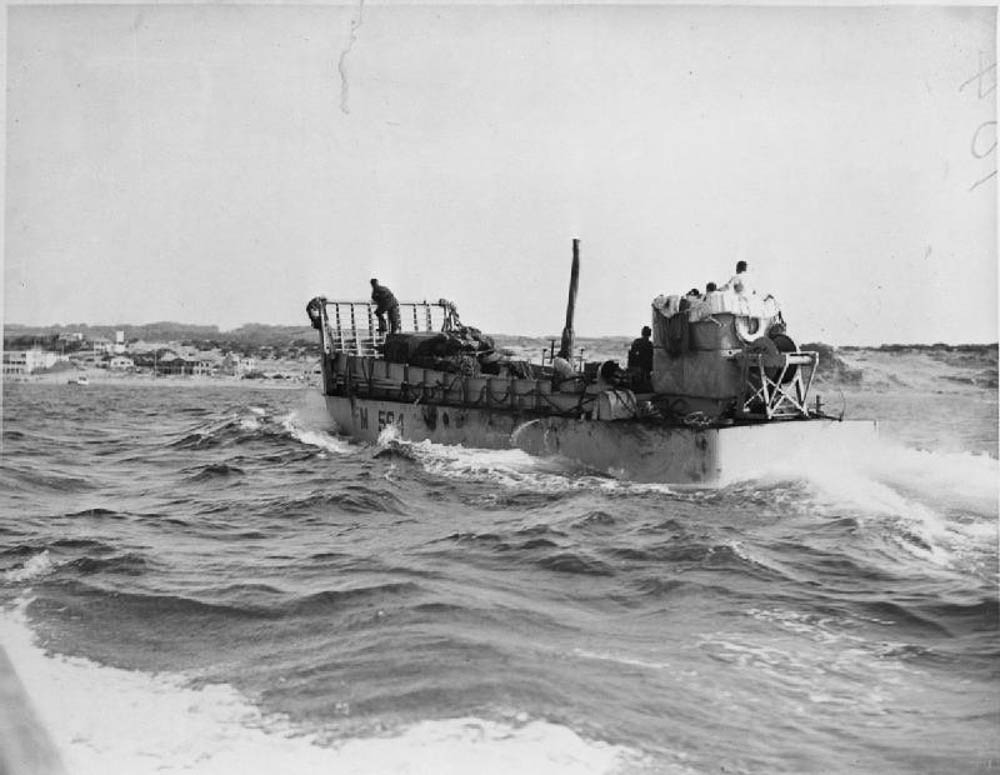
Ben M’Sik Militaire
Located within the confines of the Ben M’Sik European Cemetery but operated as a separate entity is the Ben M’Sik Militaire. This separate cemetery is dedicated solely to French citizens who died fighting in Morocco between 1907 – 1956 (the years of French rule in Morocco), including during World War II. Altogether it contains 645 French graves.
You’ll also find several monuments to various relevant events including a French deportation memorial—dedicated to the memory of those French citizens who were deported from France to the Nazi concentration camps.
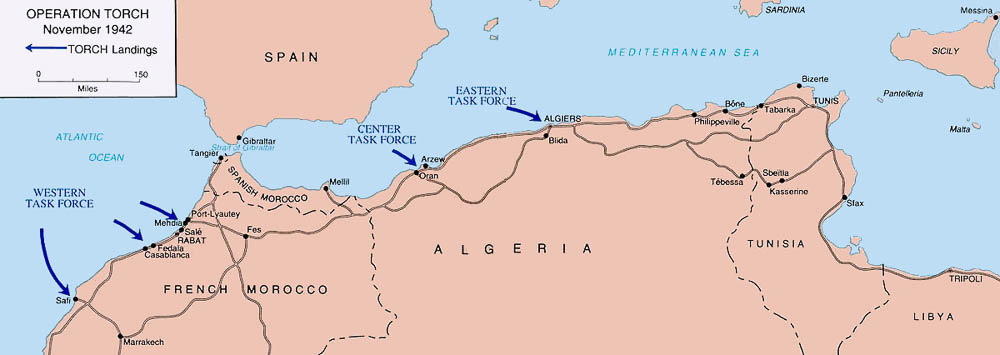
2. Western Naval Task Force Marker – Casablanca
In lieu of an American cemetery for those killed in Morocco is the Western Naval Task Force Marker. Also located within Ben M’Sik Cemetery, this memorial marker commemorates the successful amphibious landings in Morocco by the U.S. Western Naval Task Force.
Taking place long before D-Day (the largest and most ambitious amphibious landing in history), the landings of Operation Torch were “the first ever trans-oceanic amphibious operation.” Remarkably, the troops and naval vessels that landed on the coast near Casablanca actually set off from Virginia.
For more information on the Western Naval Task Force Marker and the Force’s work in Morocco, check out the ABMC’s brochure here.
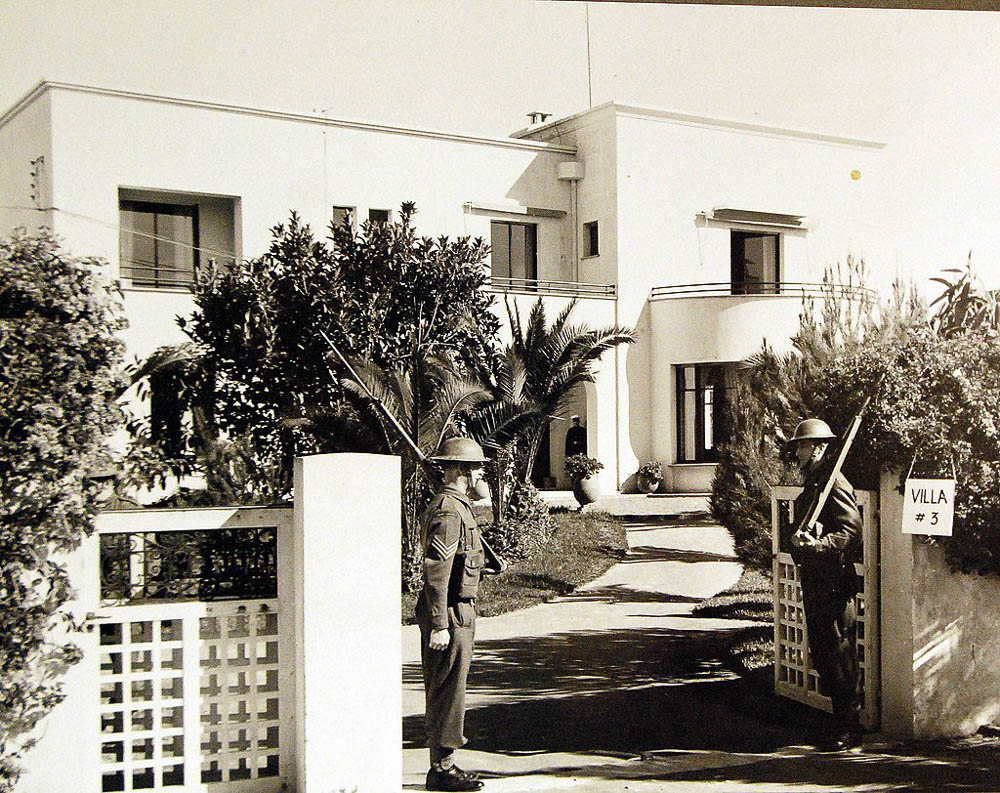
3. Villa Mirador – Casablanca
Villa Mirador is a large, beautiful residence located in the Anfa district of Casablanca. During the Casablanca Conference it served as a temporary residence for both President Roosevelt and Prime Minister Churchill.
Shortly after the war, the United States purchased the villa to serve as the residence of the U.S. Consul General in Casablanca which is still its purpose today. Because this property is now official government residence, you unfortunately cannot go inside (without an invite at least). However, you can see photos of its interior here which includes commemorative plaques of the building’s WWII history and related historical photographs.
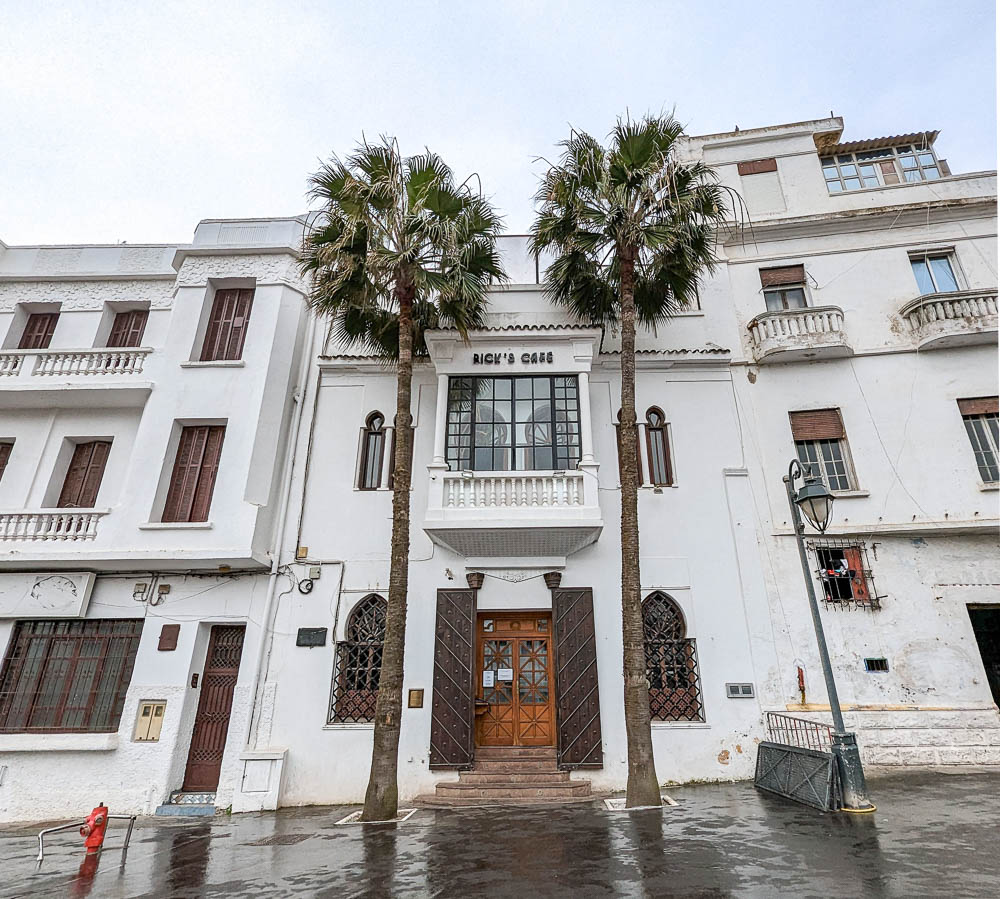
4. Rick’s Café – Casablanca
Of course, you can’t leave Casablanca without a stop at Rick’s Café. Lovers of the classic World War II film Casablanca will recognize the name immediately, even if both the movie and the beloved café are purely figments of Hollywood’s imagination.
Sadly, it’s true; Casablanca (the movie) is entirely fictional, as is Rick’s Café. However, that didn’t stop a couple of expats from opening a café of their own in its likeness. Before opening, it was redesigned to mimic the look of the café from the movie.
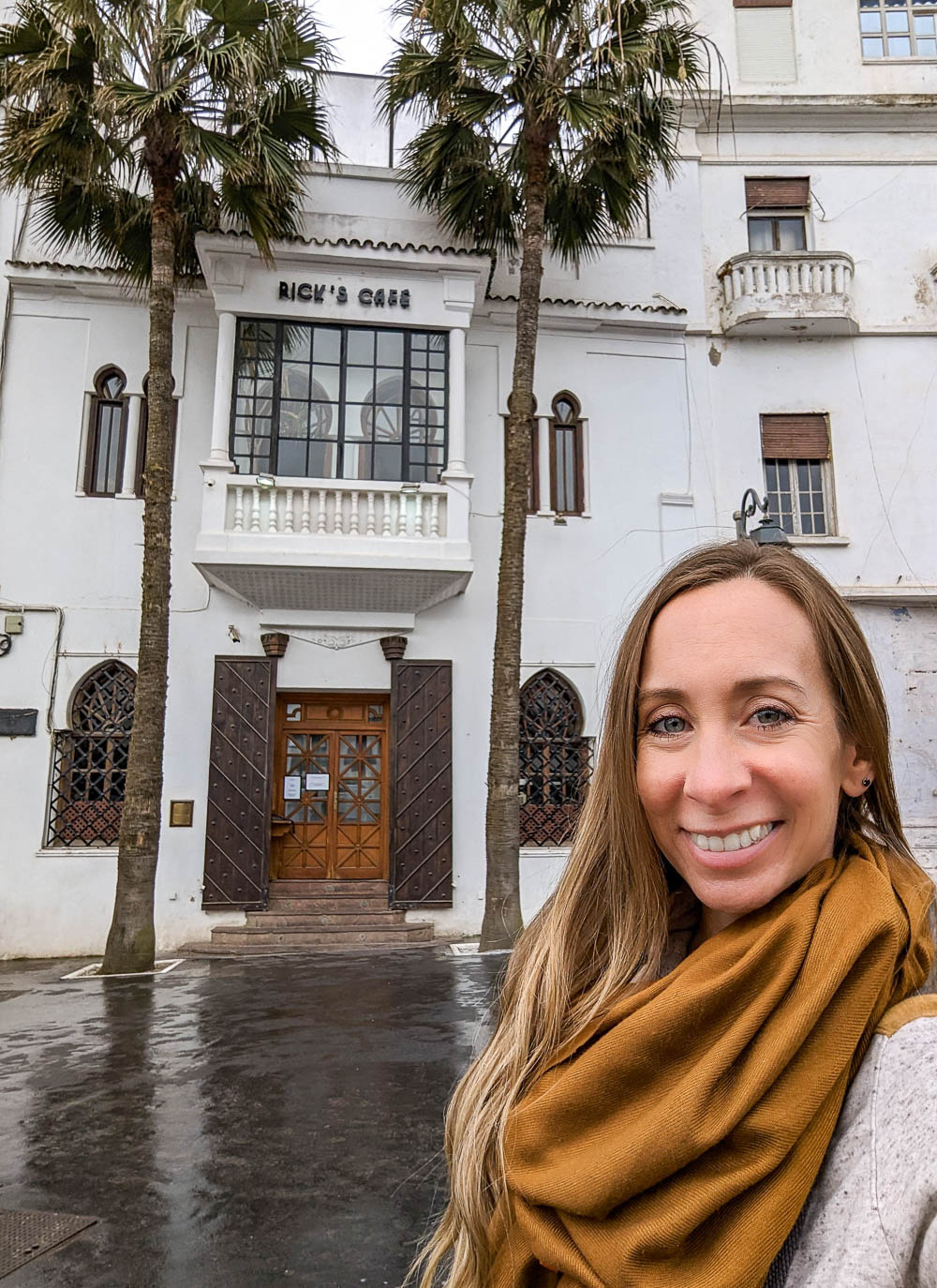
Located just a few miles from the grand Hassan II Mosque, Rick’s Café is open Tuesday-Sunday for drinks, lunch and/or dinner, and, of course, music. This Casablanca-esque watering hole is a favorite among visitors to Morocco’s largest city and definitely worth a visit.
Fictional locale or not, I still classify this as one of the WWII sites in Morocco you should check out. And obviously you should watch Casablanca before your visit.
5. Fedala Beach – Mohammedia
If you’d like to explore for yourself one of the beaches where Allied troops landed during Operation Torch, head to the city of Mohammedia (between Casablanca and Rabat, closer to Casablanca).
Known as Fedala during WWII and renamed to Mohammedia in 1960, the beach at Mohammedia is where Americans came ashore as part of Operation Torch on November 8, 1942.
Though Mohammedia is mostly an industrial city today, its beaches are popular among locals and known as some of the most beautiful around. You can find out more about Mohammedia’s beaches here.

6. Mausoleum of Mohammed V – Rabat
About an hour’s drive north of Casablanca is the city of Rabat, Morocco’s current capital. Just outside the city’s center you’ll find the Mausoleum of Mohammed V, the Sultan of Morocco during World War II.
Mohammed V is well-known for his humanitarianism and for standing up to Vichy France during the war. When the Nazi puppet state attempted to impose anti-Semitic laws on Morocco, Mohammed V refused. Under his watch, he made sure that no Jews were deported, killed, nor forced to endure inhumane or discriminatory treatment.
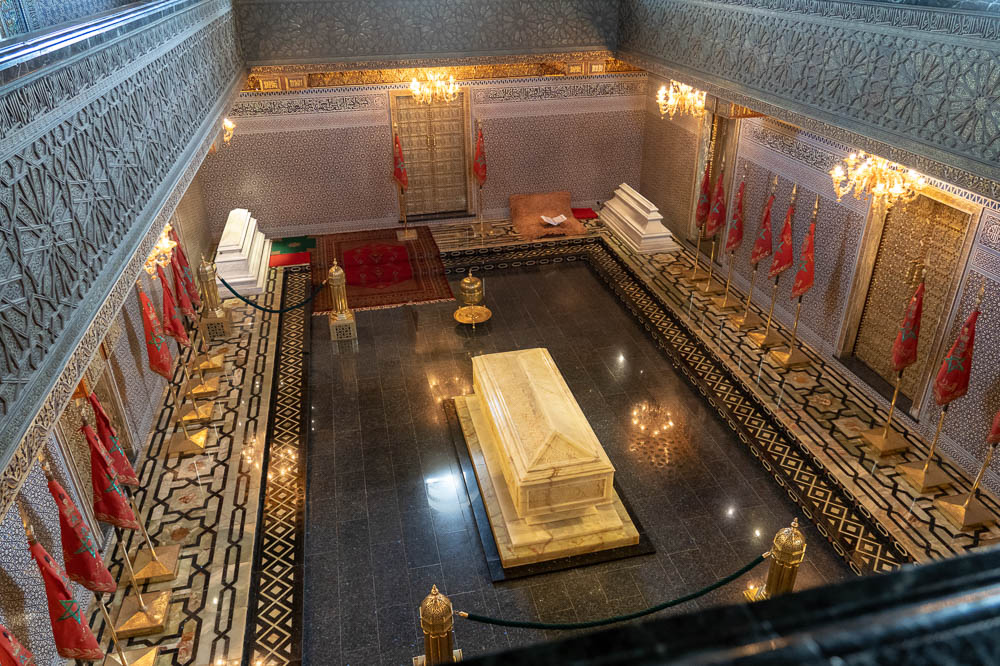
He maintained his resistance throughout the war and thus saved the lives of hundreds of thousands of Moroccan Jews destined for Nazi concentration camps. Read more about Mohammed V’s WWII legacy here.
Today, you can pay your respects at his mausoleum in Rabat at Yacoub Al Mansour Square. Admission is free and the building is typically open for visitors between 9am and 6pm (though it was mysteriously closed when I visited on a Tuesday afternoon).
The Mausoleum of Mohammed V is one of the most popular things to see in Rabat. You can also visit this beautiful site on:
- this excellent guided day tour of both Casablanaca and Rabat
- and on this Rabat day trip from Casablanca
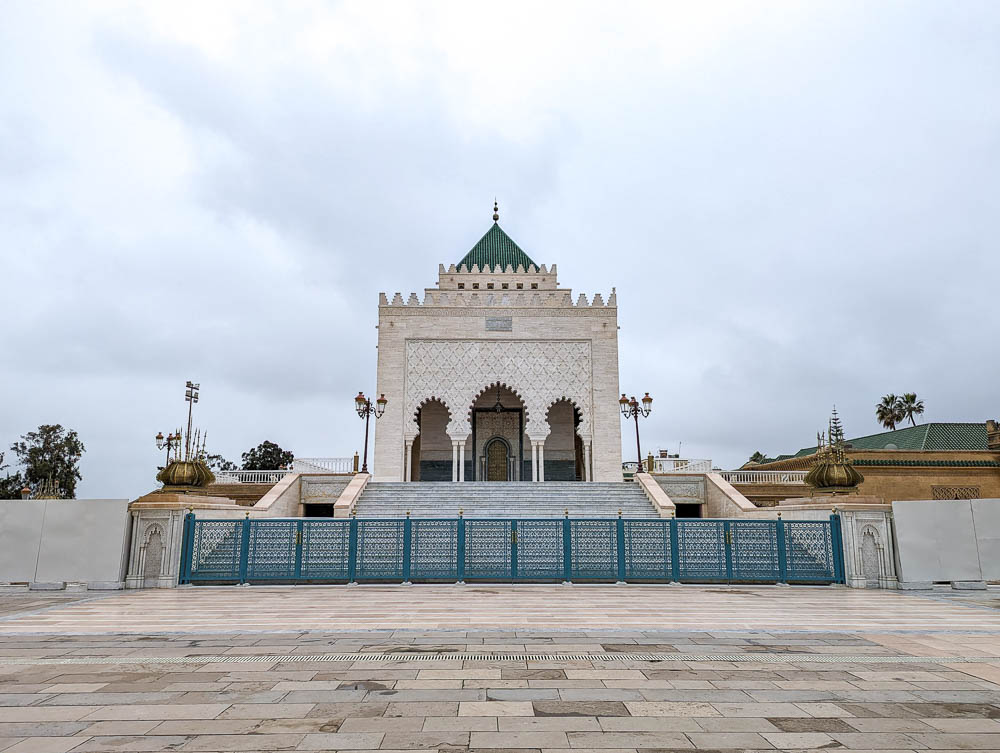
7. Kasbah Mahdiyya – Kenitra (Port Lyautey)
Drive another hour north past Rabat and you’ll end up in the city of Kenitra, known during World War II as Port Lyautey. Just up from Kenitra’s coast you’ll find the Kasbah Mahdiyya (also spelled Mehdya and Mehdia), the site of an important battle in Operation Torch.
The Battle of Port Lyautey (commanded by Generals Eisenhower and Patton) lasted from November 8-10, 1942. The result was an Allied victory and the occupation of the city by American troops. One of the battle’s objectives was the seizure of Kasbah Mahdiyya, a strategically located 10th century fort.
After the battle, President Roosevelt surprised the troops with a personal visit and toured the kasbah himself. Fortunately, you can still visit the still-standing kasbah today for a glimpse into Morocco’s WWII history.
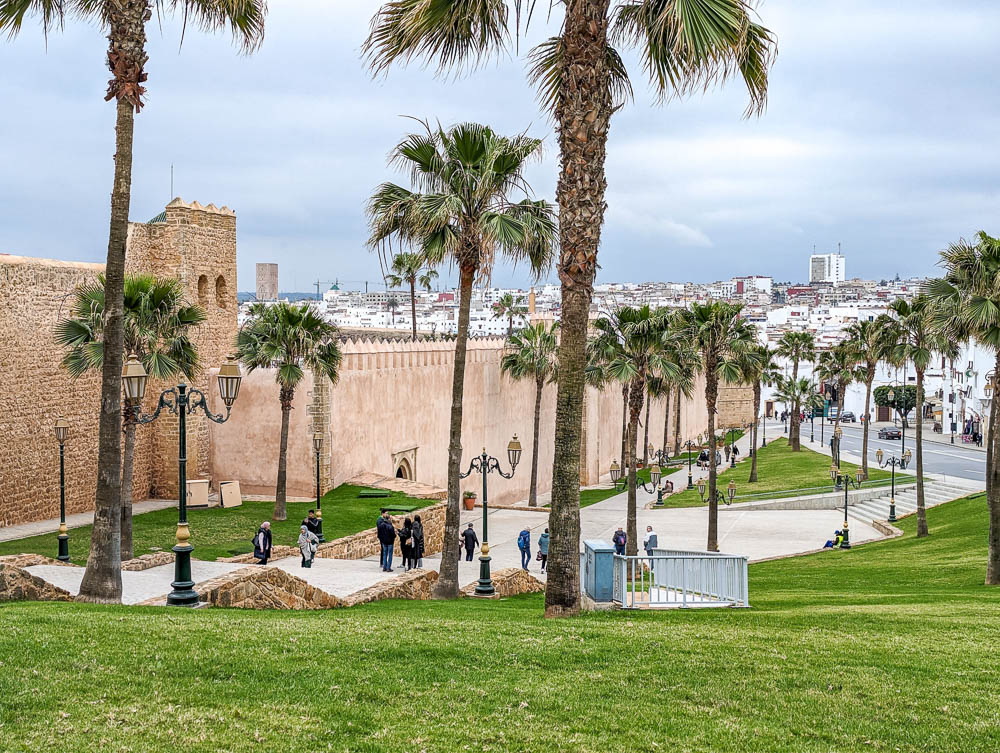
8. Rabat European Cemetery
While in Rabat you will also find the Rabat European Cemetery, a Commonwealth war cemetery. Nine victims of the Second World War are buried here—6 from the United Kingdom and 3 from South Africa. The cemetery is open for visitors every day from 8am to 5pm.
According to the Commonwealth War Graves Commission, there is a French-speaking cemetery curator that lives on site and is available to provide additional information and assistance. You can find more information on the Rabat European Cemetery here.
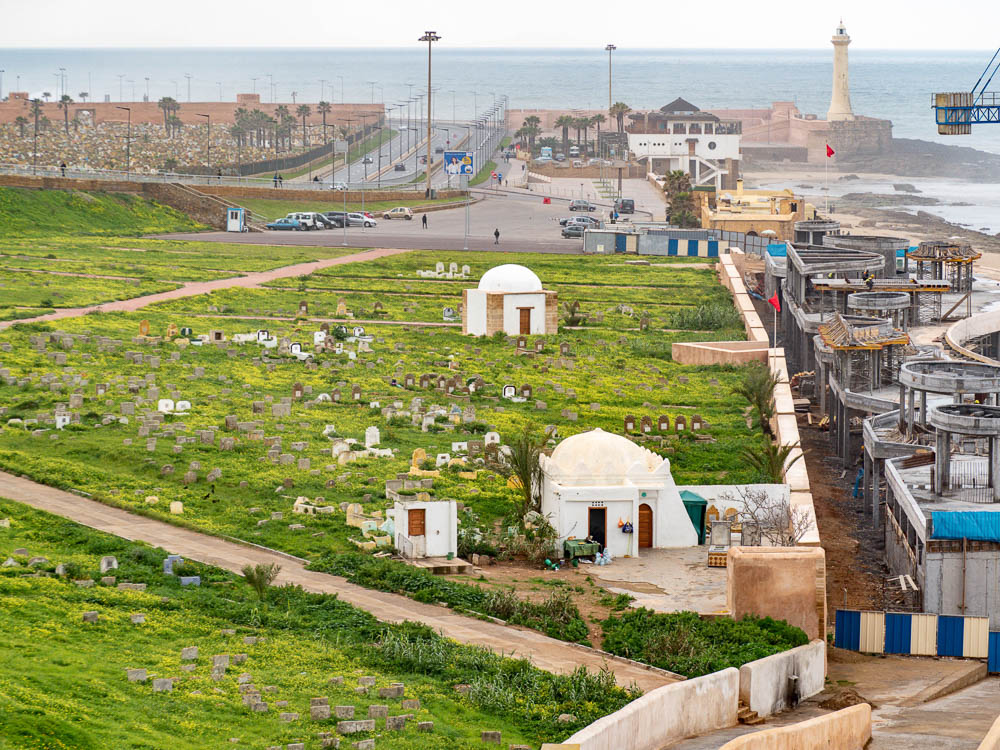
9. Royal Palace – Rabat
If World War II movie filming locations interest you (like they do me!) then here’s another: the Royal Palace in Rabat. While the King of Morocco has royal palaces in all major cities (and then some), the Royal Palace in Rabat can essentially be described as “where he works”—a White House of sorts.
As far as WWII sites in Morocco go, Rabat’s Royal Palace appears in a good chunk of the movie Patton. Starting around the 12-minute mark is the scene where General George Patton meets with Mohammed V outside the Royal Palace in Rabat. You can watch Patton here.
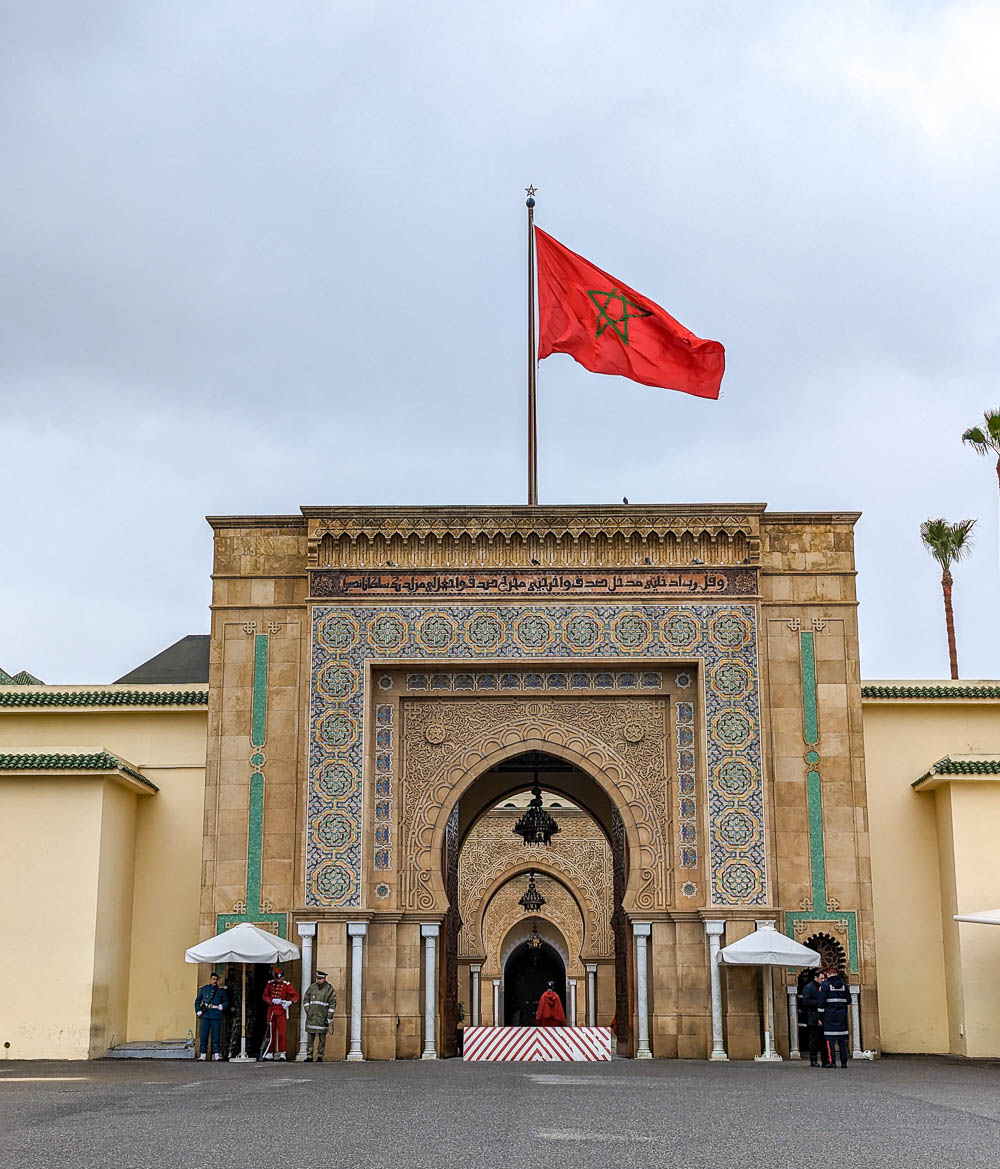
He is treated to a grand military procession of Morocco’s forces, presented with a medal, and thanked by Mohammed V for America’s “brilliant amphibious landing on the continent of Africa” on behalf of the people of Morocco.
Rabat’s Royal Palace can be visited (from the outside), but is best done so via an organized tour since permission to get near (and photograph) the building is not openly granted. (That’s the diplomatic way of saying the armed guards don’t take too highly to curious tourists.) Thankfully, I had a trusted guide.
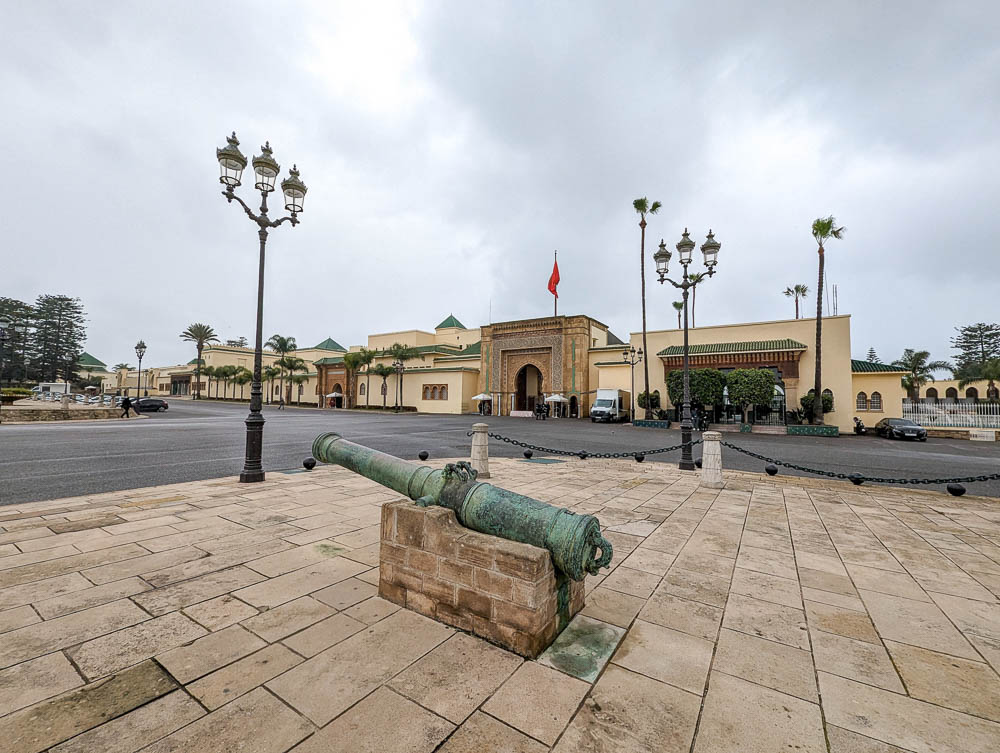
Instead, book one of these guided tours that includes a stop at this very cool location, especially if you’re a fan of the movie Patton:
- Best of Rabat Tour (Half-Day) – Includes a half-hour stop at the Royal Palace and three of the other top sites in Rabat including the Mausoleum of Mohammed V.
- Casablanca and Rabat Day Tour including Lunch – Full guided tour of all the top sites in both cities, including Rick’s Café and the Royal Palace in Rabat.
- Casablanca to Rabat Full Day Trip – 6-hour guided day tour of Rabat from Casablanca
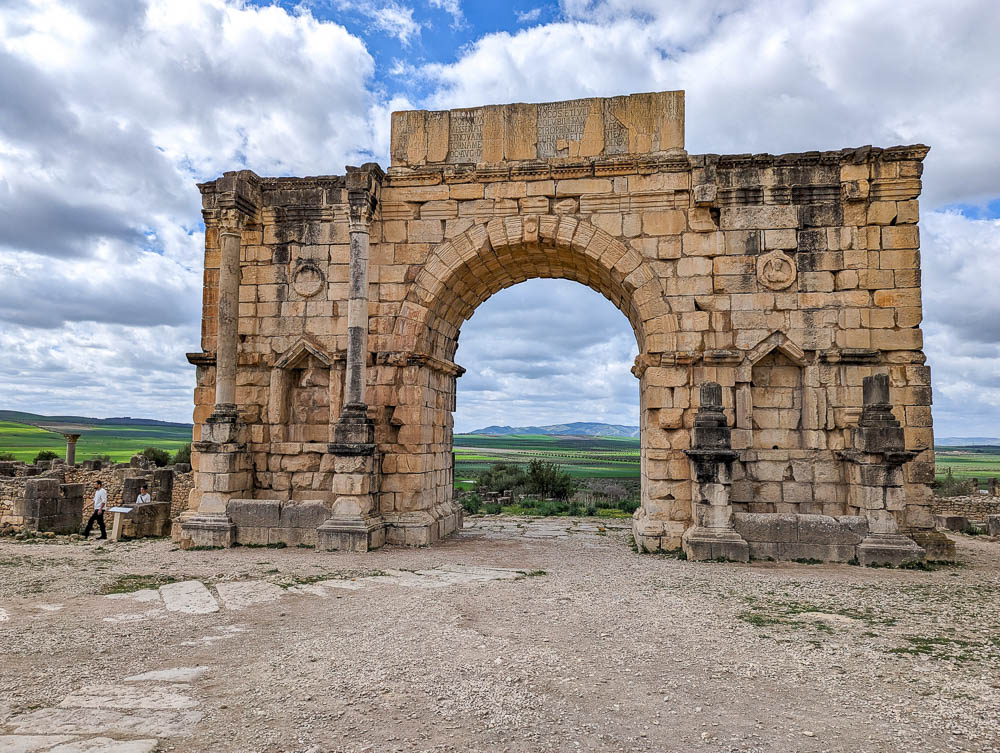
10. Archaeological site of Volubilis – Meknès
The archaeological site of Volubilis is one of the top sites to see in Morocco and another loosely relevant entry on the list of WWII sites in Morocco. This complex of ancient Roman ruins was another important filming location for the movie Patton.
At one time the capital of the Kingdom of Mauretania, the ruins at Volubilis are a UNESCO World Heritage Site and an excellent way to spend a few hours between Rabat and Fes.
Half an hour into the film, George Patton and others make a trip over to Volubilis where Patton details the military adventures from his previous life 2,000 years ago. The location, as is expected from a site of archaeological ruins, looks exactly the same today.

If a stop by Volubilis interests you, take a look at these organized tours to make your trip as stress-free as possible:
- From Fes: Meknes and Volubilis Day Trip – Includes hotel pick-up and drop-off and a dedicated guide so you can get the most out of your day
- Private Day Tour to Meknes, Volubilis, and Moulay Idriss from Fes – Includes a local guide at Volubilis so you can learn all kinds of interesting stuff about this Roman capital
- Fez to Volubilis and Meknes Day Trip – Full day trip to Volubilis and Meknes from Fez, does not include a guide but instead allows you to explore independently.
- See all Volubilis tours here on Viator and Get Your Guide (my two go-to tour companies)
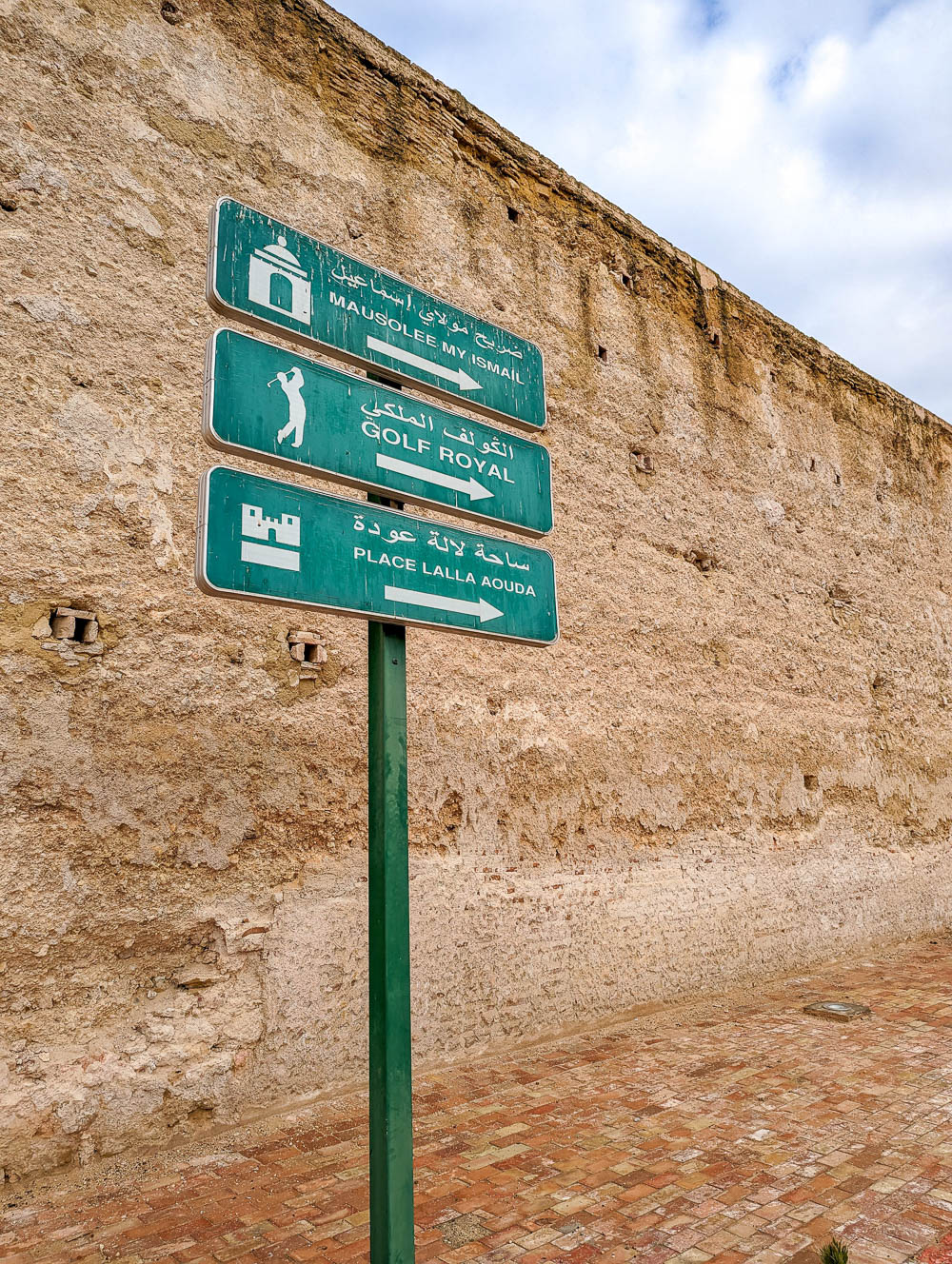
11. Royal Golf Marrakech
Though Marrakech’s famed Royal Golf course can only claim a small bit of relevance as far as WWII sites in Morocco go, I still think it’s worth mentioning.
If you fancy a luxurious round of golf or two while in Morocco, head to Royal Golf in Marrakech—the country’s premier golf club. Why? Because this was the favored course of Winston Churchill and Dwight Eisenhower, obviously.
Opened in 1927, Royal Golf Marrakech is Morocco’s second-oldest course. It’s an incredibly beautiful oasis of calm amidst the madness of Marrakech.
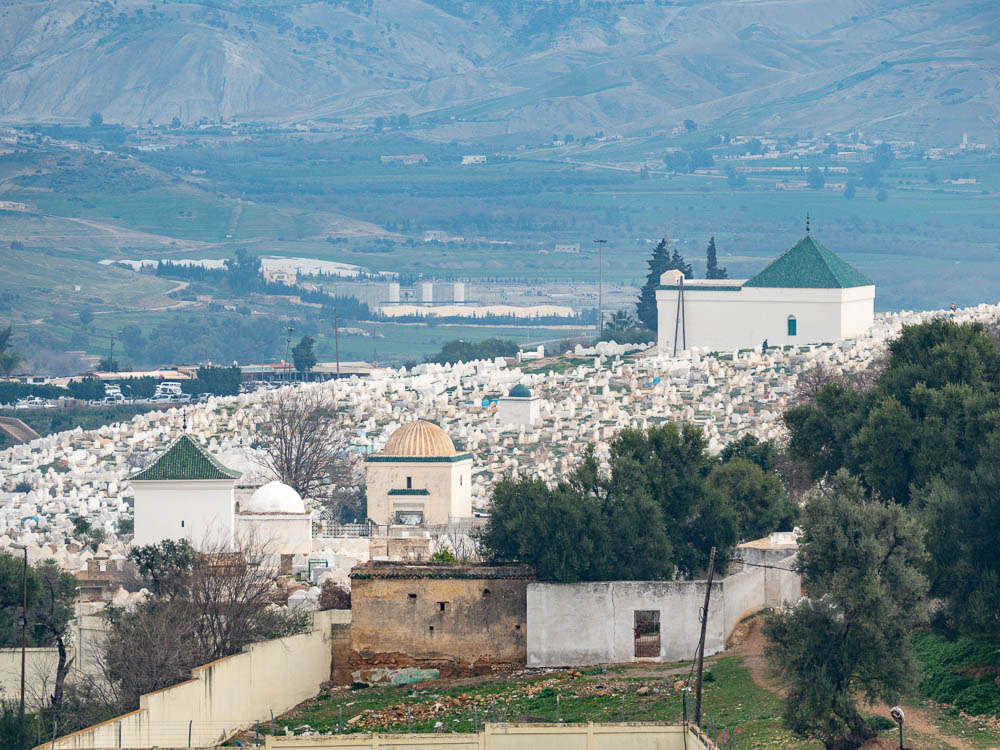
12. Tangier war cemeteries
Just across the Strait of Gibraltar near the northernmost tip of Morocco lies the city of Tangier. Here you’ll find three Commonwealth war cemeteries.
The Tangier (St. Andrew) Churchyard contains the graves of 12 Commonwealth men killed in Morocco during WWII—9 from the UK, 2 from South Africa, and 1 Canadian. Visiting information here.
The Tangier (Boubana) Catholic Cemetery contains two Commonwealth graves from WWII—both members of the Gibraltar Security Police from the UK. Visiting information here.
Tangier (Rabat Road) Jewish Cemetery contains the graves of just one WWII casualty—that of Gibraltar Security Police Constable Abraham Attias. Visiting information here.
Across the Strait in the lobby of Gibraltar’s Parliament is a memorial plaque to these men of the Gibraltar Security Police who were killed by explosives on February 6, 1942.

Where to stay to visit the WWII sites in Morocco
Because the WWII sites in Morocco are so spread out, there’s no one central location I can suggest. However, many of them are in Casablanca and, seeing as that’s the country’s main city and airport, your tour of Morocco would do well to start there. Check out:
Imperial Casablanca Hotel & Spa – During WWII, this hotel served as General Patton’s headquarters and operation base after Operation Torch’s initial invasions. It doesn’t have excellent reviews but it does have the history factor if that’s your priority!
Gray Boutique Hotel Casablanca – This is where I stayed in Casablanca on my recent visit. Great location, friendly staff, excellent breakfast, and huge comfortable rooms. I loved my stay here and would definitely recommend it. Book your room here.
As for the rest of Morocco, I have an entire post that covers all the Morocco riads, hotels, kasbahs, and camps I stayed at myself. This includes hotels in Fes, Meknès, Marrakech, and many more. (I stayed at ten different places over 15 days!)
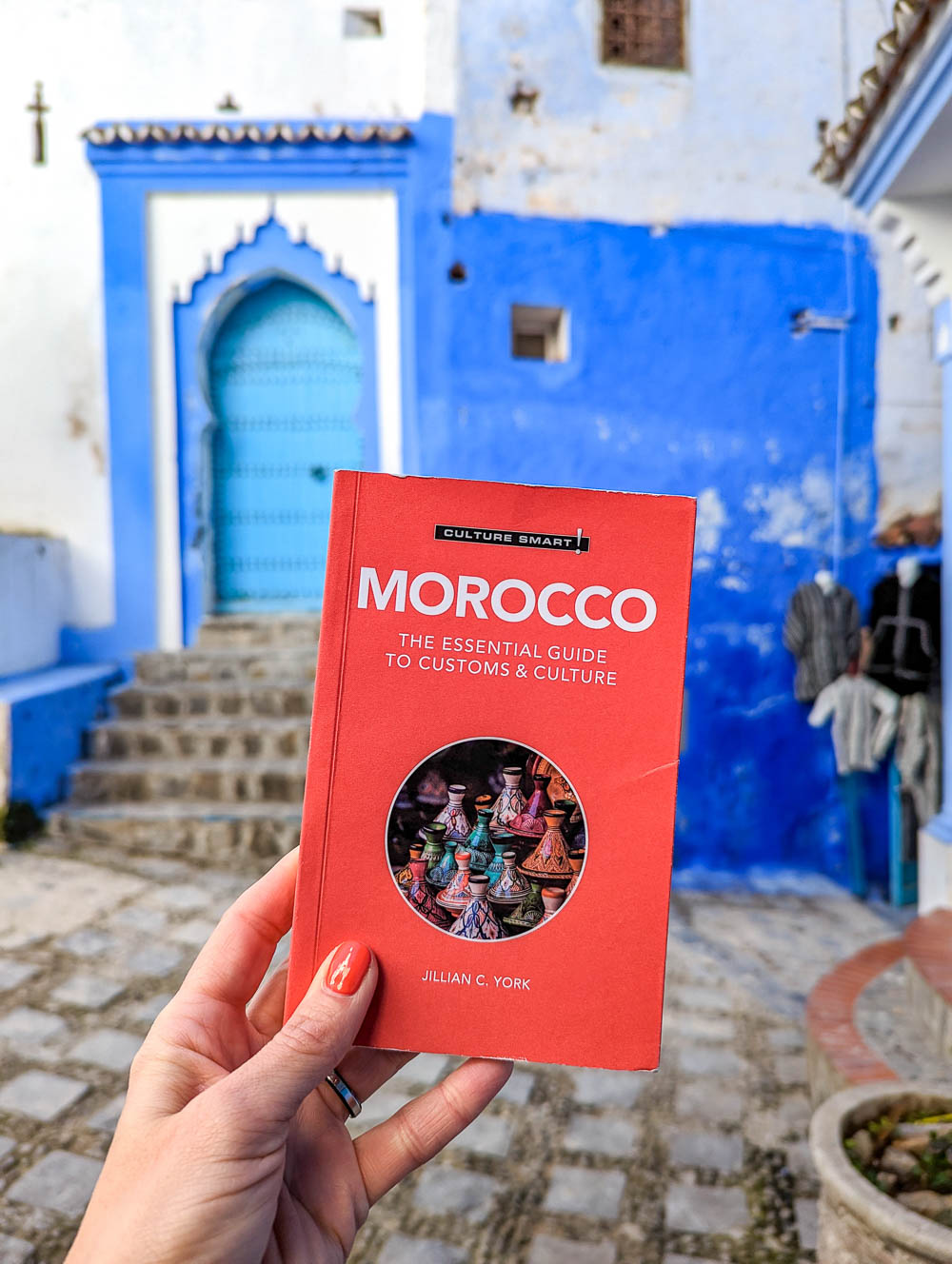
What to pack for your visit to Morocco’s WWII sites
If you’re planning a trip to explore these WWII sites in Morocco, here’s a list of some essential packing items:
European plug adapters – Morocco uses the same style plugs as Europe, so be sure to pick up some of these before your trip.
Morocco guidebook – I’m a big fan of guidebooks so I always recommend them for hotel and restaurant recommendations as well as important location information.
Culture Smart Morocco – I pick up one of these pocket-sized customs and culture guides before every new country I visit. I highly recommend!
Travel gear from the DWWII Shop – Pick up some unique WWII travel gear like T-shirts, passport holders, tote bags, and more. (I donate a portion of all sales to a WWII charity as well!)
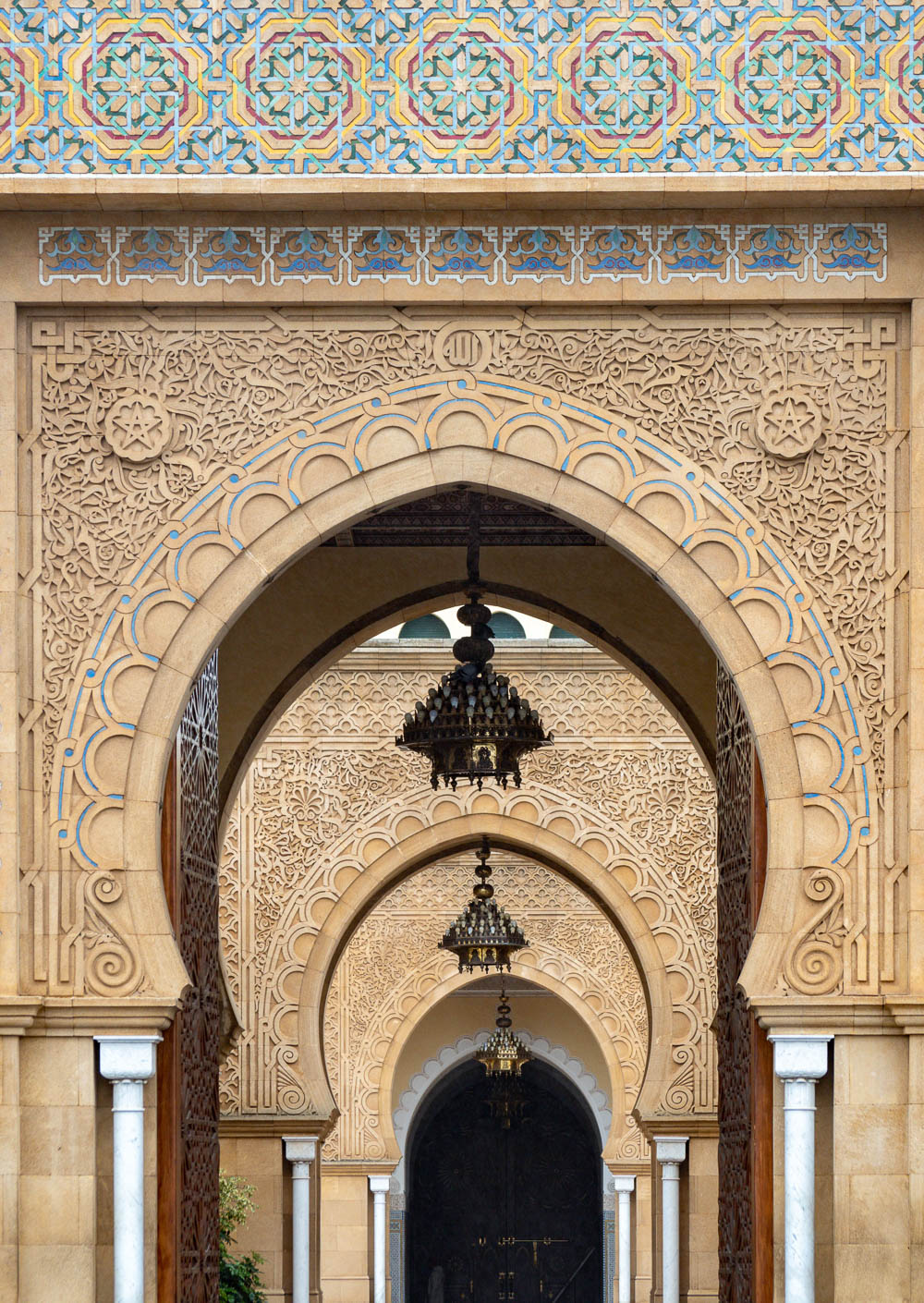
Comfortable shoes – A must when touring Morocco. In warmer seasons I always wear either Chacos or Teva sandals. In cold or wet seasons I wear Sorel duck boots.
Anti-theft purse – I always travel with an anti-theft purse no matter where I go. The only thing you should worry about in Morocco is when you’re going to get your next tagine. I have bags from both Travelon and PacSafe and recommend both!
Refillable water bottle – I always recommend carrying a refillable water bottle with you at all times.
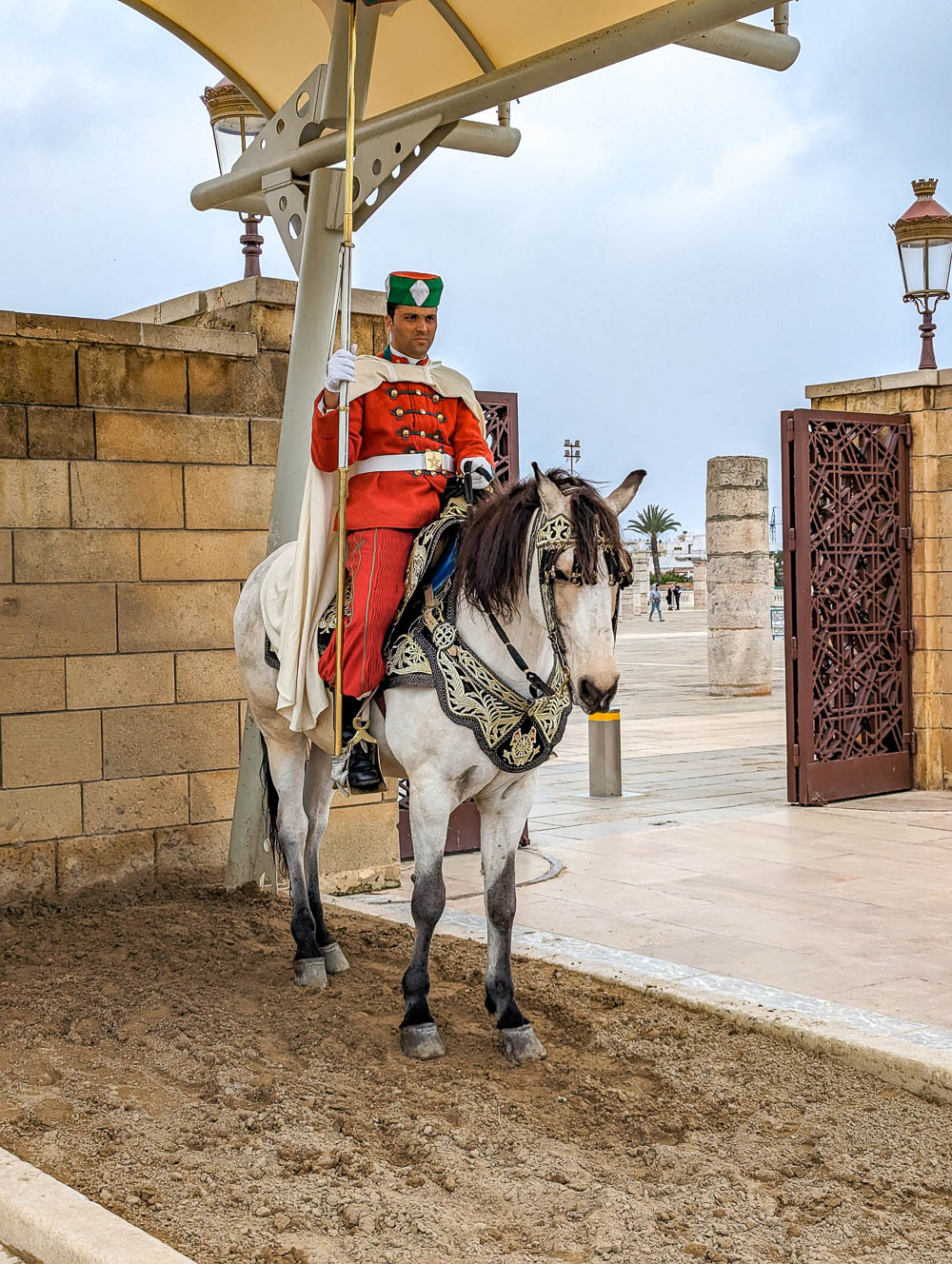
Tips for visiting the WWII sites in Morocco
Here are a few tips you should have for your visit to Morocco’s World War II sites:
1. Respect the fact that you are not allowed to photograph the guards outside any of these facilities. (Nor are you allowed to photograph the police in Morocco at all.) The only exceptions to this rule are the guards outside the Mausoleum of Mohammed V and at the Royal Palace in Rabat with permission. Elsewhere, don’t even attempt it.
2. Understand that some sites may not be open when they otherwise “should.” As in the case of my latest visit to the Mausoleum of Mohammed V. That’s just the way it goes when traveling. Always have a backup plan.
3. Note that certain places like Rick’s Café and Royal Golf Marrakech require reservations. (Not required, per se, at Rick’s, but highly recommended.)
4. Watch Casablanca and Patton before you go!
5. Book a tour whenever possible. This will get you the most access to certain sites and access to the most inside information on these super interesting places.
6. As always when visiting WWII sites around the world, be respectful at all times.
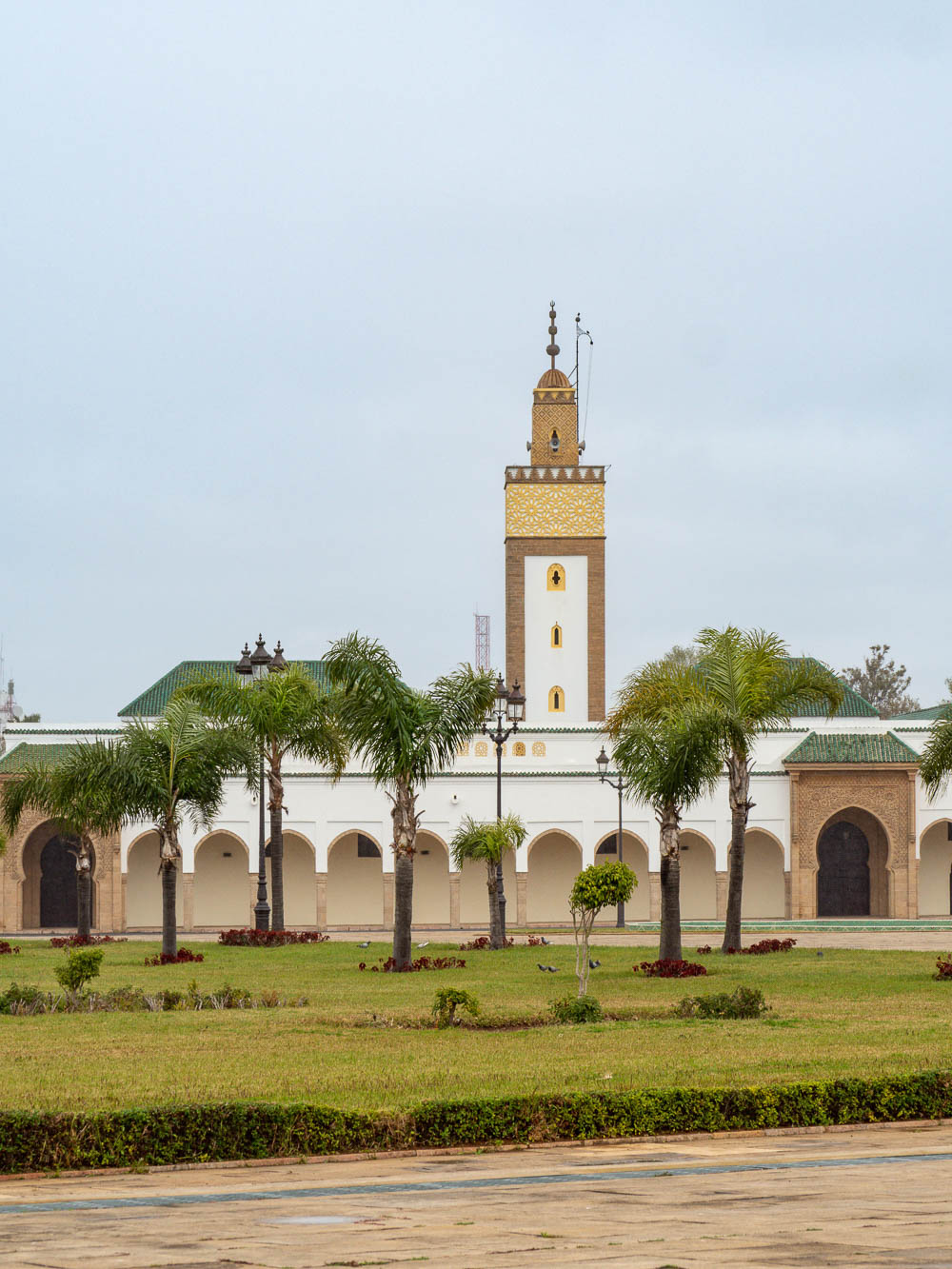
More info for visiting WWII sites in Morocco
- Heading to Morocco? Read reviews and find great places to stay here.
- Want to take a tour? You can book my exact Morocco tour here.
- Looking for day tours while you’re there? Check out these great options from Viator and Get Your Guide.
- Don’t forget a Morocco guidebook and this must-have customs and culture guide!
Save this info, pin this image:
